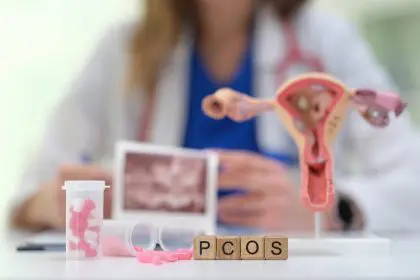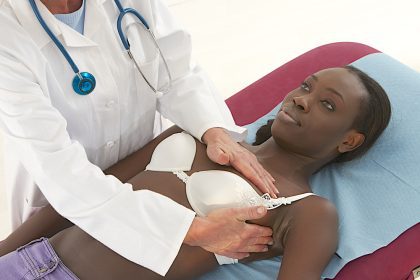The human body contains countless variations that make each person unique, and reproductive anatomy is no exception. Among these variations is the retroverted uterus – a condition where the uterus tilts backward toward the spine rather than forward over the bladder. Despite affecting approximately one in five people with a uterus, many remain unaware they have this anatomical difference until discovered during a routine gynecological examination.
This common variation rarely causes health problems, but understanding its potential effects can help those experiencing unexplained symptoms. Here are five important aspects of a retroverted uterus everyone should know.
How the position differs from normal
The uterus is a hollow, pear-shaped organ located in the pelvis between the bladder and rectum. In most people, it tilts slightly forward toward the abdomen, a position known medically as anteverted. This forward tilt places the uterus above the bladder.
In a retroverted uterus, also commonly referred to as a tilted or tipped uterus, the organ instead angles backward toward the spine and rectum. This variation occurs in approximately 20% of people with a uterus, making it a common anatomical difference rather than a medical condition requiring correction.
The position of the uterus is determined by the round ligaments and uterosacral ligaments that hold it in place within the pelvic cavity. These ligaments provide support while allowing some movement as the bladder and rectum fill and empty. In people with a retroverted uterus, these ligaments may be naturally more relaxed or positioned differently.
During a pelvic examination, healthcare providers can feel the position of the uterus using their fingers. Many people learn about their retroverted uterus during such routine exams, often to their surprise since this anatomical variation typically causes no noticeable symptoms.
It’s important to understand that a retroverted uterus is considered a normal variant of uterine position. The direction your uterus faces doesn’t necessarily impact your health or reproductive function in most cases. However, as with many anatomical variations, some people may experience symptoms related to this positioning.
The 5 main causes of a retroverted uterus
While some people are born with a retroverted uterus as their natural anatomy, others develop this condition later in life due to various factors affecting the pelvic organs and supporting structures.
The first major cause is congenital factors. Some people simply develop with their uterus in this position during fetal development. In these cases, the retroverted position is present from birth and represents a normal variation rather than a medical problem.
The second cause involves pregnancy and childbirth. The significant changes that occur in the pelvic area during pregnancy and delivery can affect the position of the uterus. The stretching of ligaments and pelvic floor muscles may allow the uterus to tip backward after childbirth. This is relatively common, with some studies suggesting that pregnancy can change uterine position in either direction.
The third factor is the natural aging process, particularly around menopause. As estrogen levels decline, the supporting ligaments of the uterus may lose some elasticity and strength. This relaxation of support structures can allow the uterus to gradually shift into a retroverted position over time.
The fourth cause involves scarring from pelvic conditions. Endometriosis, a condition where tissue similar to the uterine lining grows outside the uterus, can cause inflammation and scarring known as adhesions. These adhesions may pull on the uterus, fixing it in a retroverted position. Similarly, pelvic inflammatory disease, an infection of the reproductive organs, can create adhesions that affect uterine positioning.
The fifth major cause relates to growths or masses in the pelvis. Uterine fibroids, which are non-cancerous growths in the uterus, can change its shape and position depending on their size and location. Large fibroids at the back of the uterus may tilt it toward the spine. Other pelvic masses or previous surgeries in the area may also alter uterine position through similar mechanisms.
Understanding these causes helps explain why some people are born with a retroverted uterus while others develop this anatomical variation later in life. For those who experience a change in uterine position due to medical conditions like endometriosis or fibroids, treating the underlying condition may sometimes help address any associated symptoms.
Recognizing potential symptoms
Most people with a retroverted uterus experience no symptoms and may never know about their anatomical variation unless told by a healthcare provider during an examination. However, some individuals may notice certain discomforts that could be related to the position of their uterus.
Painful periods represent one potential symptom for some people with a retroverted uterus. The backward tilt might affect how menstrual blood flows out of the body, potentially causing increased cramping. This doesn’t mean that everyone with painful periods has a retroverted uterus, nor that everyone with a retroverted uterus will experience painful periods.
Pain during sexual intercourse, medically known as dyspareunia, might occur in some people with a retroverted uterus. This typically happens with deep penetration that puts pressure on the uterus and surrounding structures. The pain is often described as a deep, dull ache rather than a sharp pain. Certain positions may be more comfortable than others.
Lower back pain, especially during menstruation, might be more common in those with a retroverted uterus. The backward tilt places the uterus closer to the lower spine, and the normal swelling that occurs during menstruation might create additional pressure in this area.
Urinary symptoms occasionally occur with a retroverted uterus. Some people report increased urinary frequency, difficulty emptying the bladder completely, or recurrent urinary tract infections. These symptoms might happen because the position of the uterus can affect the bladder differently than in people with an anteverted uterus.
Fertility issues are rarely caused by a retroverted uterus alone. Most people with this anatomical variation conceive and carry pregnancies without any problems. However, if the retroverted position is due to an underlying condition like endometriosis or pelvic inflammatory disease, those conditions might affect fertility independently of the uterine position.
It’s crucial to note that these symptoms can have many other causes beyond uterine position. Anyone experiencing persistent pain or discomfort should consult with a healthcare provider for proper evaluation rather than assuming symptoms are due to a retroverted uterus.
Diagnosis and imaging techniques
Healthcare providers typically discover a retroverted uterus during a routine pelvic examination. During this exam, the provider inserts two fingers into the vagina while placing the other hand on the abdomen to feel the position, size, and shape of the uterus and surrounding organs.
When a retroverted uterus is present, the provider will feel the body of the uterus tilting toward the back of the pelvis rather than forward. This simple manual examination is usually sufficient to identify the variation in uterine position.
If symptoms are present or additional information is needed, imaging techniques may be used to visualize the uterus and surrounding structures more clearly. Transvaginal ultrasound provides detailed images by inserting a small probe into the vagina. This technique offers better visualization of the pelvic organs than an abdominal ultrasound and can confirm the position of the uterus while checking for any abnormalities.
In some cases, healthcare providers might recommend a pelvic MRI for a more comprehensive view of the reproductive organs. This advanced imaging technique provides detailed pictures of soft tissues and can help identify any underlying conditions that might be causing a retroverted uterus, such as endometriosis or adhesions that aren’t visible on ultrasound.
Rarely, a hysterosalpingogram might be performed, especially if fertility concerns exist. This procedure involves injecting a contrast dye through the cervix and taking X-ray images to visualize the uterine cavity and fallopian tubes. While primarily used to check for blockages in the fallopian tubes, it can also show the shape and position of the uterus.
For most people with a retroverted uterus, extensive imaging isn’t necessary unless symptoms are present or there are concerns about other pelvic conditions. The discovery of this anatomical variation during a routine exam typically requires no further investigation if the person is asymptomatic.
Treatment options when symptoms occur
For the majority of people with a retroverted uterus, no treatment is necessary as this anatomical variation rarely causes problems. However, when symptoms do occur, several approaches may help alleviate discomfort.
Positional strategies during sexual activity can make a significant difference for those experiencing pain during intercourse. Experimenting with different positions that minimize deep penetration or pressure on the posterior pelvis may increase comfort. Open communication with partners about comfortable positions and the need to avoid certain movements can help manage this aspect of intimacy.
Pelvic floor physical therapy offers specialized treatment for many pelvic pain conditions, including those that might be related to a retroverted uterus. These trained therapists can teach exercises to strengthen or relax the pelvic floor muscles as needed and may use manual techniques to release tension in the pelvic tissues. This approach addresses not just the position of the uterus but the overall function of the pelvic floor.
A pessary device represents another option for some individuals. This silicone or rubber device is inserted into the vagina to support the pelvic organs and can sometimes temporarily shift the uterus into a different position. Pessaries come in various shapes and sizes and must be fitted by a healthcare provider. Regular removal for cleaning and checkups is necessary to prevent complications.
Hormone therapy might be suggested in some cases, particularly if the retroverted uterus is related to endometriosis. Hormonal medications can reduce inflammation and slow the growth of endometrial tissue, potentially easing symptoms. This approach treats the underlying condition rather than directly addressing the uterine position.
In rare cases where a retroverted uterus causes severe, persistent symptoms that don’t respond to other treatments, surgical options might be considered. A procedure called uterine suspension can surgically reposition the uterus and secure it in an anteverted position. However, this surgery is rarely performed solely for a retroverted uterus and is typically reserved for cases where other serious pelvic issues are present.
Treatment should always be guided by symptoms rather than the mere presence of a retroverted uterus. Many people with this anatomical variation never need any intervention at all. Those experiencing symptoms should work closely with their healthcare provider to determine which approaches might be most beneficial for their specific situation.
Impact on pregnancy and fertility
For most people with a retroverted uterus, fertility is not affected. The position of the uterus does not typically interfere with the ability of sperm to reach an egg or with the implantation of a fertilized egg in the uterine lining. Countless successful pregnancies occur in people with retroverted uteri.
During early pregnancy, a retroverted uterus may cause some mild symptoms different from those with an anteverted uterus. Some people report feeling more pressure on their bladder or rectum in the first trimester. However, these symptoms are generally temporary and resolve as pregnancy progresses.
As the uterus grows with pregnancy, usually by the end of the first trimester or beginning of the second trimester (around 12-14 weeks), it naturally rises out of the pelvis and tips forward regardless of its pre-pregnancy position. This means that any symptoms specifically related to the retroverted position typically resolve by this point in pregnancy.
The concern that a retroverted uterus might increase the risk of miscarriage has been studied extensively, and research shows no increased risk. The uterine position does not affect the strength of the uterine muscles or the ability of the uterus to support a growing pregnancy.
During labor and delivery, a retroverted uterus poses no special challenges once it has shifted to accommodate the growing fetus. The process of labor progresses normally, and vaginal delivery is just as possible as for someone with an anteverted uterus. There is no increased need for cesarean delivery based solely on having had a retroverted uterus before pregnancy.
After childbirth, the uterus may return to either an anteverted or retroverted position. Pregnancy and delivery can sometimes change the position of the uterus permanently due to stretching of the supporting ligaments. Some people who had an anteverted uterus before pregnancy find it has become retroverted afterward, while others may experience the opposite change.
For those trying to conceive who have a retroverted uterus, no special positions or techniques are necessary. The normal process of conception works regardless of uterine position. However, if conception is taking longer than expected, it’s important to consult with a healthcare provider to evaluate all potential factors affecting fertility, rather than assuming the retroverted uterus is the cause.
Living comfortably with a retroverted uterus
The vast majority of people with a retroverted uterus lead completely normal lives without any special accommodations or concerns. This anatomical variation rarely requires lifestyle changes or ongoing medical management.
For those who do experience occasional discomfort, simple strategies can help manage symptoms effectively. During menstruation, using heating pads on the lower back or abdomen may alleviate cramping or back pain. Over-the-counter pain relievers like ibuprofen can reduce inflammation and discomfort during periods or after activities that trigger symptoms.
Regular exercise, particularly activities that strengthen the core and pelvic floor, can provide better support for the pelvic organs and potentially reduce symptoms. Yoga poses that open the hips and pelvis may be especially beneficial, though any exercise regimen should be discussed with a healthcare provider first.
Awareness of your body’s responses to certain activities can help you make minor adjustments that improve comfort. For instance, if sexual activity in certain positions causes discomfort, communicating with partners about more comfortable alternatives can enhance intimacy without pain.
Annual gynecological examinations remain important for everyone with a uterus, regardless of its position. These regular checkups allow healthcare providers to monitor any changes and address concerns early. During these visits, don’t hesitate to discuss any symptoms you believe might be related to your retroverted uterus.
While a retroverted uterus itself is not a medical concern, it’s important to recognize when symptoms might indicate something more serious. Persistent or severe pelvic pain, unusual bleeding, or recurring infections should prompt a medical evaluation, as these could signal other conditions requiring treatment.
Remember that having a retroverted uterus is simply an anatomical variation – not a disorder or disease. This perspective can help reduce unnecessary worry or focus on what is, for most people, merely an interesting fact about their body rather than a medical issue requiring attention.
When to consult a healthcare provider
While a retroverted uterus rarely requires medical intervention, certain situations should prompt a discussion with your healthcare provider. Understanding when to seek advice can help address potential concerns early and appropriately.
Persistent pain during intercourse that interferes with intimacy or quality of life deserves medical attention. Your provider can help determine whether the pain relates to your uterine position or stems from another cause entirely. Various treatments, from physical therapy to counseling about comfortable positions, may help address this issue.
Severe menstrual pain that disrupts daily activities shouldn’t be dismissed as normal, regardless of uterine position. Intense cramping, particularly when accompanied by other symptoms like heavy bleeding or nausea, might indicate conditions like endometriosis or adenomyosis that can occur alongside a retroverted uterus.
Difficulty conceiving after one year of trying (or six months for those over 35) warrants a fertility evaluation. While a retroverted uterus rarely impacts fertility directly, the conditions sometimes associated with it, such as endometriosis or pelvic inflammatory disease, can affect conception. A thorough assessment can identify any factors contributing to fertility challenges.
Urinary symptoms like recurring infections, difficulty emptying the bladder, or urine leakage should be evaluated by a healthcare provider. Though a retroverted uterus might occasionally contribute to such issues, these symptoms often have other causes requiring specific treatments.
New or changing pelvic symptoms always merit medical attention. If you’ve been diagnosed with a retroverted uterus but experience new pain, pressure, or discomfort in the pelvic region, consult your provider. These changes could indicate an unrelated condition developing or a complication related to your existing anatomy.
Remember that healthcare providers are accustomed to discussing reproductive anatomy and function. Never hesitate to ask questions about your retroverted uterus, however minor they may seem. Understanding your unique anatomy empowers you to make informed decisions about your health and well-being.
A retroverted uterus represents just one of many natural variations in human anatomy. For most people with this variation, it causes no symptoms or complications throughout life. Knowledge about this common condition helps dispel myths and unnecessary concerns while providing guidance for those rare instances when symptoms do occur. With proper information and occasional medical support when needed, living with a retroverted uterus should have minimal impact on daily life, sexual health, or reproductive plans.


















